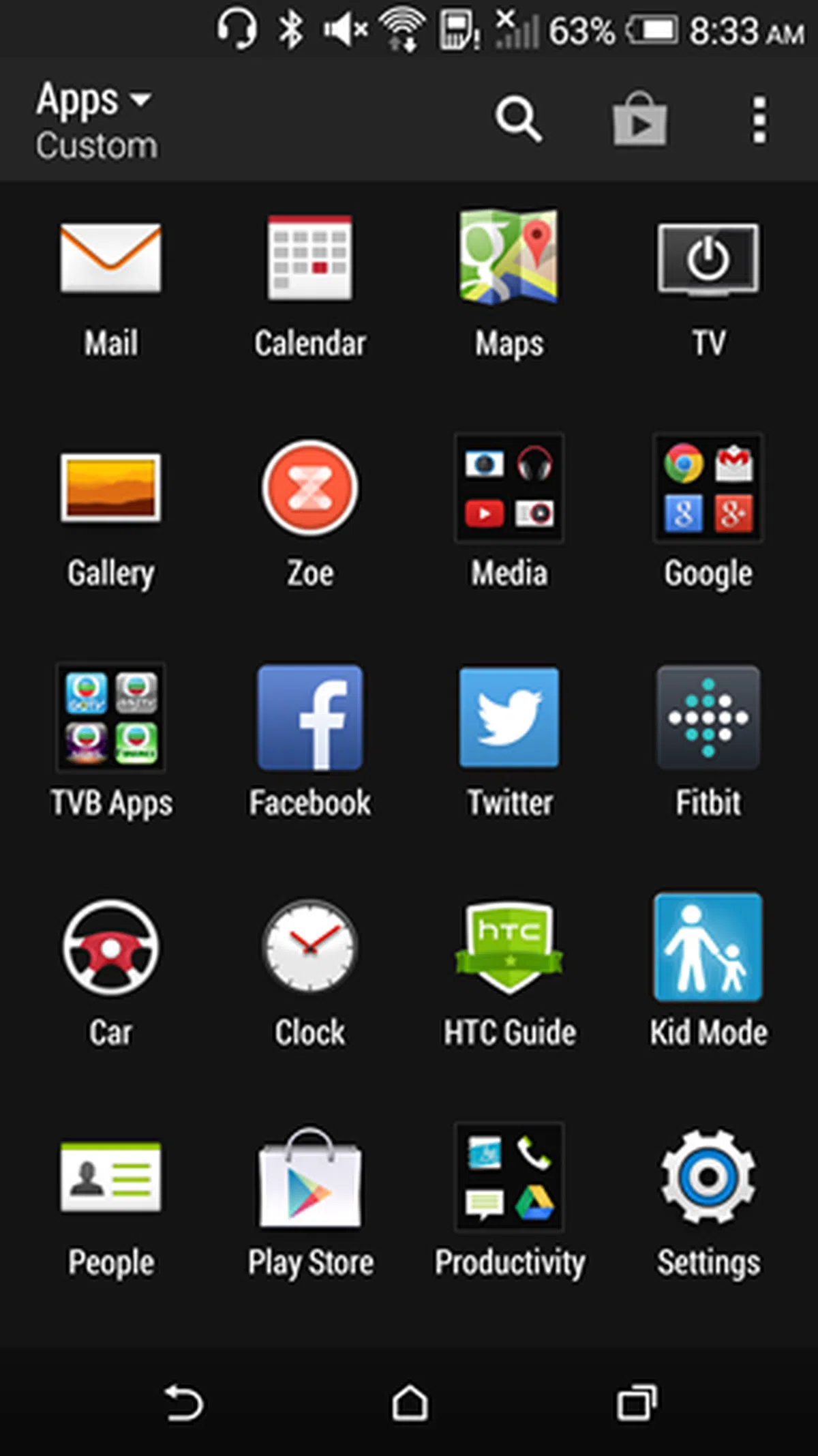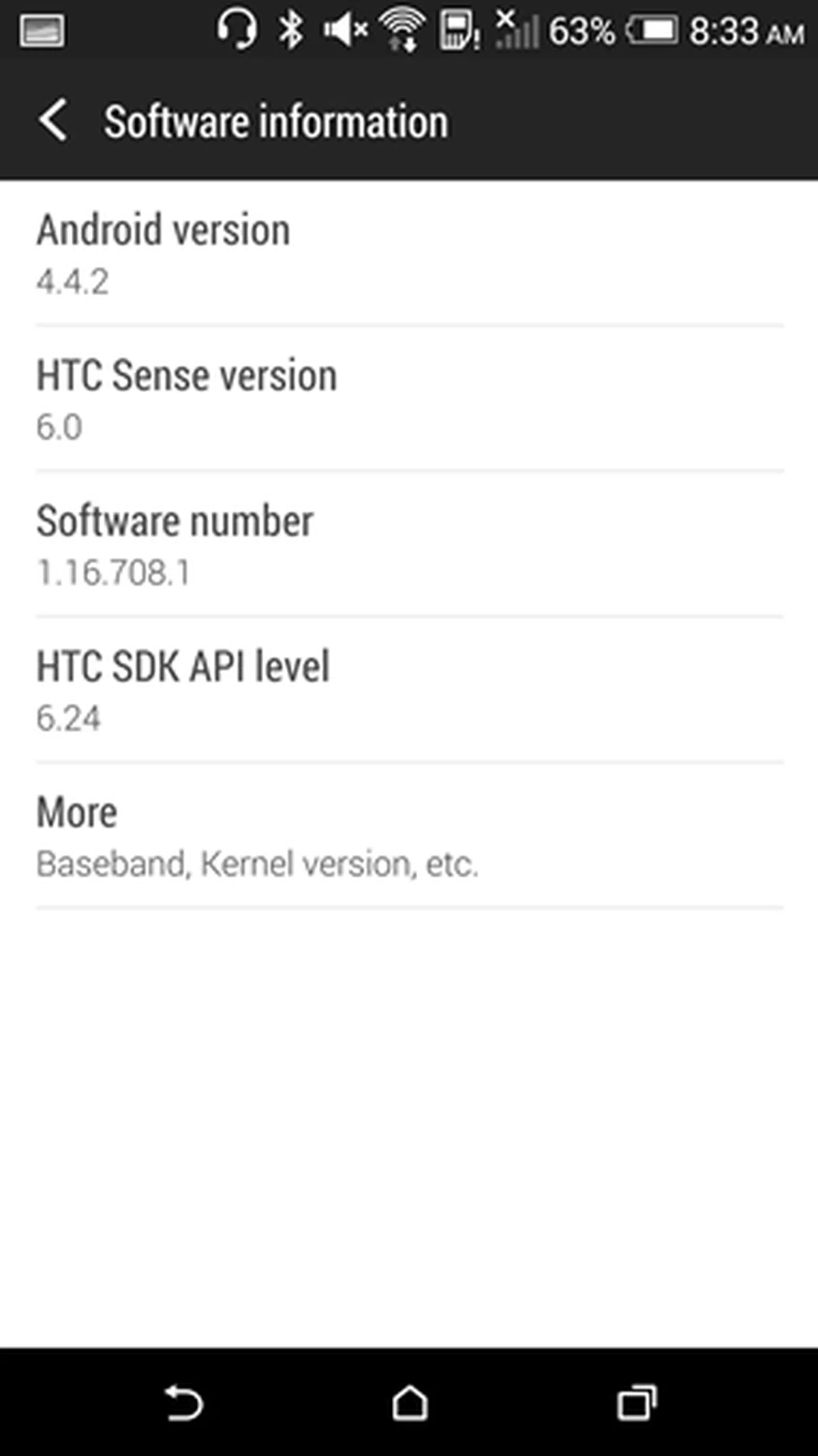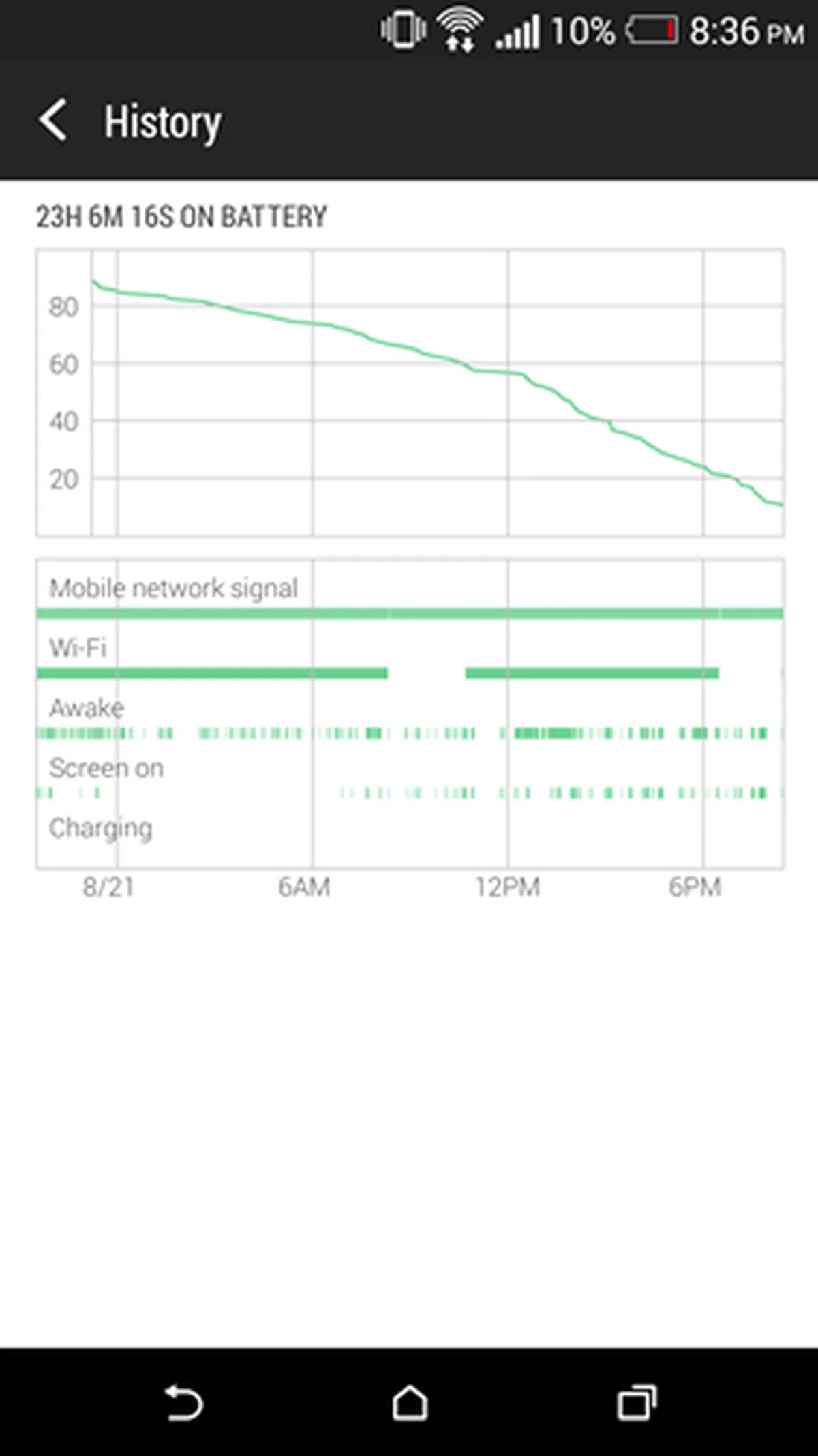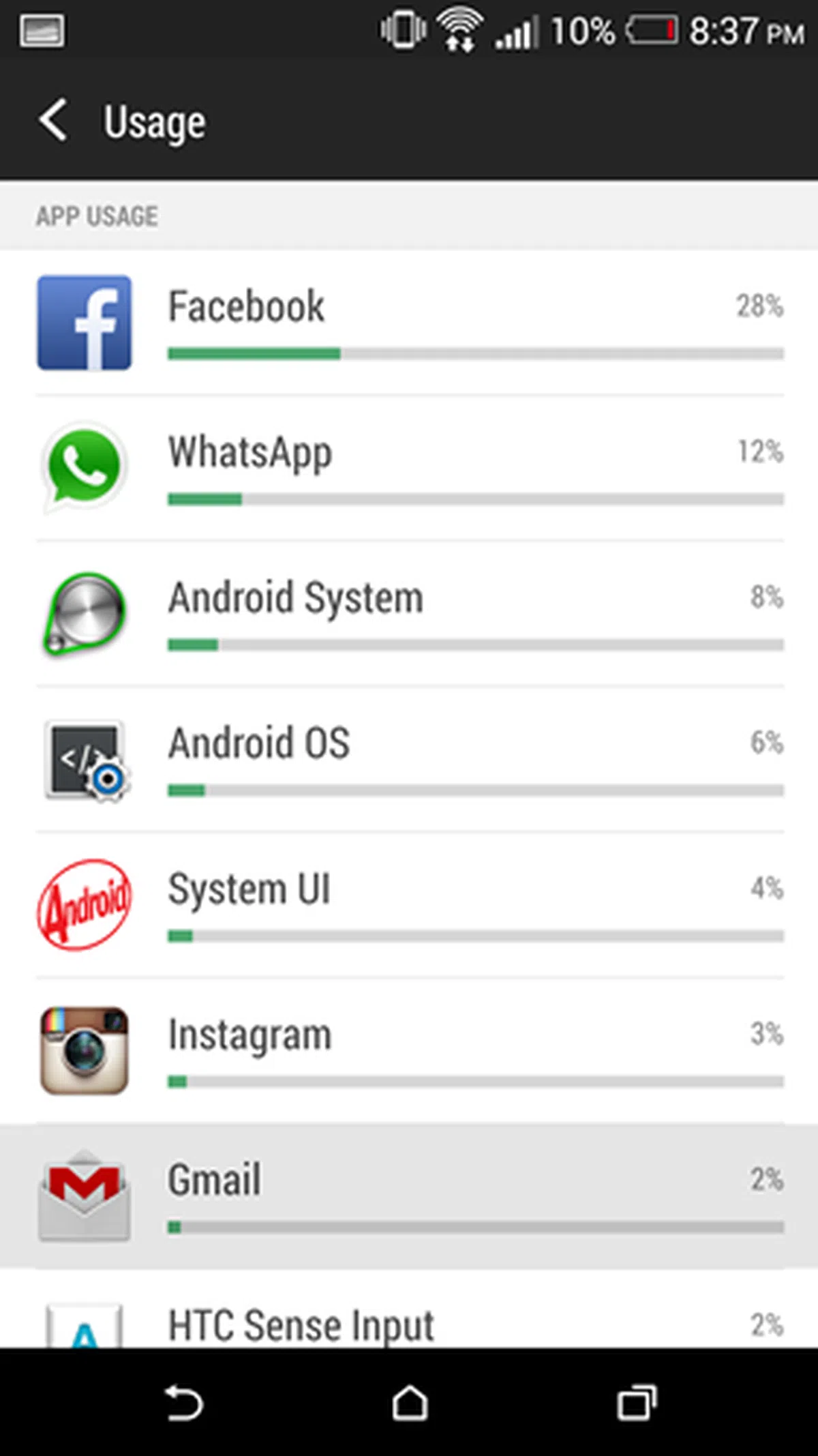Is Butterfly 2 the best HTC smartphone yet?
We had a few days with the just announced HTC Butterfly 2 and we feel that it melds the best of the old Butterfly series and the new One series. Here's our take on the Butterfly 2, which could be HTC's best smartphone yet this year.
By HardwareZone Team -
*Note - We've actually published a detailed hands-on of the HTC Butterfly 2 earlier this week. For those who've read our article previously, you can jump direct to our Performance and Conclusion page to find out how it fares.
Overview

The HTC Butterfly 2 is not a variant of the One (M8); it is the third member of a generation of smartphones which started off in Japan two years ago.
HTC hasn't forgotten about its Butterfly portfolio even though we haven't heard much about it for the past seven months - until today. The Taiwanese company refreshed its Butterfly line-up earlier today with the unveiling of the Butterfly 2, also known as the J Butterfly HTL23 in Japan.
How different is the Butterfly 2 from its predecessor, the Butterfly S? Is it also better than the One (M8) and (E8)? Read on for our first impressions of the Butterfly 2. But first, here's a quick look at the three Butterfly models:
Design & Handling
HTC claimed that the Butterfly 2 sports a new design with a distinct curve that separates it from the One family of smartphones. To be honest, the differences are subtle and do not degrade the excellent in-hand feel of the device in any way. We have always been fans of the design philosophy taken by HTC for its Butterfly smartphones and we are glad to see the company continuing to upkeep the standard in the latest Butterfly 2.


HTC continues to deliver smartphones with the best build quality regardless of the materials used.
In tune with its design mantra for 2014 - form follows materials -, HTC clearly understands how to use plastic in the right way as it did for aluminum on the One (M8) and One (2013). You get the same sturdy polycarbonate chassis as its predecessors and the One (E8) although there are two unique design elements featured on the Butterfly 2.
Unlike the rest of its smartphones, the Butterfly 2 is the first HTC smartphone to sport an IP57 rating for water and dust resistance. As a quick recap, the first digit (in this case, "5") refers to the phone's protection against limited dust ingress. Six is the highest rating for dust resistance.
The second digit "7" refers to the water protection and the level that is specified by the manufacturer; given its protection level, HTC states that the Butterfly 2 is able to stay underwater up to 1 metre for 30 minutes. Level eight is the highest rating for water proof protection. In comparison, the Samsung Galaxy S5 has an IP67 rating while the Sony Xperia Z2 is IP58 rated. This makes the Butterfly 2 on-par with the Xperia Z2 in terms of dust resistance, but worse against water, and on equal footing with the Galaxy S5 in terms of water resistance, but poorer protection against dust.

There is no fiddly protective cover or flap to deal with on the HTC Butterfly 2.
Despite the varying levels of protection in the respective categories, the Butterfly 2 one-ups its rivals in terms of waterproof design. While the Galaxy S5 and Xperia Z2 require watertight covers or flaps to protect their card slots and charging ports, the Butterfly 2 has no cover over its open ports (microSD and nano-SIM card slots). This means that you no longer need to ensure that the covers/flaps are pressed down for a tight seal. It also helps that the Butterfly 2 has a non-removable back, which eliminates the possibility of water damage if it had a removable rear and one point is not fully depressed down. As such, the Butterfly 2 tries to reduce human error to ensure the phone is better protected to the standards it has to live up to.

Unlike the HTC One (M8), you do not need to use a pin to eject the nano-SIM and microSD card slots on the HTC Butterfly 2 (pictured at the bottom). You have to ensure that the trays are fully inserted to prevent any water damage.

The volume controls are divided into two buttons on the HTC Butterfly 2 (top), which is different from the single strip on the HTC One (M8).

There is no protective cover for the micro-USB port and 3.5mm audio output jack, yet the phone can still be immersed in water for up to 1m for 30 minutes.
HTC also made it very convenient to remove the nano-SIM and microSD card slots on the Butterfly 2. While some phones such as the Apple iPhones require a pin to eject the card trays, you only need to insert your finger into the slit to pull the respective tray out.
Another key design feature of the Butterfly 2 is the use of special coating on the rear. In case you haven't noticed, the Butterfly 2 comes in three colors: red, blue and white. Like the One (E8), only one color model (in this case, it's white) comes with a matte texture on its rear. HTC said that it uses a unique anti-stain finishing to ensure that the white rear does not change color over time.
The other two colors also received some attention; they have a unified color reflection thanks to a special treatment that ensures that the color intensity remains the same from any angle you view the phone. Whether or not this coating has any true value remains to be seen, but we're sure about one thing - the glossy rear of the red and blue models are quite susceptible to fingerprints and smudges.

Notice how unsightly fingerprints and smudges look on the blue and red models of the HTC Butterfly 2.
Fortunately, this issue can be resolved with the purchase of a third-party case/cover or HTC's official Dot View case for the Butterfly 2. Working on a similar concept as the One (M8) and (E8), the Dot View case provides all round protection for the Butterfly S while giving you a retro look when using it. As the Butterfly 2 has different dimensions from the other two phones, it is not possible to use the same Dot View cases. In case you don't know, HTC recently updated the Dot View app to support 18 default themes and offers wallpaper customizations.
Software
The Butterfly 2 runs on Android 4.4.2 KitKat with HTC Sense 6.0. As such, you can expect similar software features as the One (M8) and (E8) such as Zoe app, BlinkFeed, Motion Launch Gestures and Extreme Power Saving mode.
 |  |
Performance Benchmarks
The Butterfly 2 is powered by a Qualcomm Snapdragon 801 quad-core 2.5GHz processor and 2GB RAM, which is similar to the One (M8) and (E8) and on-par with most Android flagship smartphones in the market.
As such, the Butterfly 2 is still part of the premium class of devices as far as overall hardware specs and positioning are concerned. But how does the Butterfly 2 measure up in our tests and actual use against the current competition? For one, we expect some aspects of benchmarking to yield the same outcome as the One family of smartphones. Let's take a look at the benchmarks right after this comparison table: -
Quadrant Results
Quadrant evaluates a device's CPU, memory, I/O and 3D graphics performance. Overall, the results are exactly as expected.

3DMark (2013)
Originally developed as a PC benchmarking tool, 3DMark is now expanded to support multiple platforms including Android OS. The Ice Storm benchmark is designed for smartphones, mobile devices and ARM architecture computers.
For an in-depth understanding of 3DMark for Android, do head over to our article, "3DMark - Android Device GPU Performance Review." In a nutshell, it is an OpenGL ES 2.0 benchmark test that uses fixed off-screen rendering to run two graphics tests designed to stress the GPU performance of your device and a physics test to stress its CPU performance. The benchmark consists of three test portfolios:- Standard (720p resolution rendering), Extreme (1080p resolution rendering with higher quality textures and post-processing effects) and Unlimited (disabled v-sync, display scaling and other OS factors that make it ideal for chipset comparison).
Since all the recent flagship smartphones max out the scores for the Standard and Extreme tests, we will only be looking at the scores for Ice Storm Unlimited run. The outcome is once more predictably similar, which is fortunately a good thing in this case.

SunSpider Javascript
SunSpider Javascript helps measure the browsing performance of a device when processing Javascript. It not only takes into consideration the underlying hardware performance, but also assesses how optimized a particular platform is at delivering a high-speed web browsing experience. Once more, we see a good showing from the family of HTC devices.

Battery Performance
Our standard battery test for mobile phones includes the following parameters:
- Looping a 800 x 480-pixel video with screen brightness and volume at 100%
- Wi-Fi and Bluetooth connectivity turned on
- Constant data streaming through email and Twitter



Summary of Benchmark Performance
As you can see from the six benchmarks above, the Butterfly 2's performance is on-par with the HTC One (M8) and (E8). Actual usage experience is also similar; interface transitions were swift and we encountered no lags.
Real World Usage Performance
But benchmarking gives only one view to the above assessment. To give you a more realistic understanding on how the Butterfly 2 fared under real world usage conditions, we included screenshots of the usage and history graphs based on this reviewer's usage.
 |  |
As seen from the graphs above, the Butterfly 2 could last about 23 hours (close to a day) before the battery levels dropped to 10% . Some notes:
- The device logged onto the 3G network because the SIM card used does not support 4G LTE.
- The device logged onto Wi-Fi connections from time to time.
- Our typical usage scenarios include making some voice calls, texting via WhatsApp, capturing some photos and sharing them on social networking sites, the occasional web browsing via Pulse News Reader and emailing.
Do note that battery mileage varies depending on your usage patterns. Compared to the One (M8), the battery mileage under real world usage conditions is about the same. If you want to maximize the battery life, you can activate the Power Saver mode where CPU power is conserved, display brightness is reduced, vibration feedback is disabled and data connection switched off whenever the screen is off. For extreme measures, you can enable the Extreme Power Saving mode which is claims to offer 30 hours of standby with 10% battery level.
Camera Performance
We took the Butterfly 2 and LG G3 for a spin during a tour in Tokyo three days ago. While our initial assessment pegged the LG G3 to be the victor in the two comparisons, we decided to pit the Butterfly 2 against the One (E8) and G3 in our labs since all three devices come with 13-megapixel rear cameras.
We were told by HTC that the 13-megapixel camera module on the Butterfly 2 is different from that of the One (E8), which aroused our curiosity further to determine which phone takes better photos. Below are the standard imaging test photos we took with the Butterfly 2 - under normal room lighting and low light conditions.
As a quick recap, this is the imaging hardware for the three compared phones:
- HTC Butterfly 2: 13-megapixel rear camera with BSI sensor, f/2.0 aperture and 28mm wide angle lens.
- HTC One (E8): 13-megapixel rear camera with BSI sensor, f/2.2 aperture
- LG G3: 13-megapixel rear camera with optical image stabilization plus (OIS+), laser autofocus and f/2.4 aperture

The image quality of the HTC Butterfly 2 is generally good. It reproduces colors accurately and details turned out well. <br> Click to view the enlarged image. Meanwhile, check out how it compares with its competitors in the below cropped shots.

From left to right: HTC Butterfly 2, HTC One (E8) and LG G3. <br> Photos taken under normal room lighting conditions in Normal mode. <br> The LG G3 has the edge here with sharper details as seen in the Chinese words. It's hard to determine a winner between the Butterfly 2 and One (E8), but the One (E8) seems to have a slight upper hand with more color saturation. Text is also a tad more crisp. <br> Click to view the enlarged image.

From left to right: HTC Butterfly 2, HTC One (E8) and LG G3. <br> Low-light photos taken in Normal mode. Both HTC handsets fared poorly in low light conditions. You still can see the Chinese text in the photo taken by the LG G3. <br> Click to view the enlarged image.
As you can see from all the photo comparisons, the Butterfly 2 held its own against the One(E8) and G3 in most situations except low light where it faltered. Despite its larger aperture, the Butterfly 2 failed to perform as well as the G3 in low light photography. However, it should be noted that the G3 has OIS+ and laser autofocus for taking better images in low light.
On a side note, the Butterfly 2 model sold in South East Asian countries only comes with 16GB internal storage. Out of the box, the Butterfly 2 has 9.44GB of available storage space after updating the preloaded apps. If you need more storage space, there is a microSD memory card slot that supports memory cards up to 128GB. For a detailed breakdown of the storage space used, you can refer to the screenshot below:

Some readers have questioned why there isn't a 32GB model available in South East Asia, including Singapore. It should be noted that a 32GB model will cost more and it is also cheaper for consumers to purchase a microSD card of their choice according to their usage needs. Nonetheless, HTC could have offered both 16GB and 32GB models so that consumers are free to make their choice.
Conclusion
The Butterfly series has always been impressive and its latest iteration obviously did not disappoint as well.
The Butterfly 2 is a very well-built device despite the use of polycarbonate. Its handling is great thanks to the intelligently curved rear which provides a comfortable and assuring grip. The only issue we had with the Butterfly 2 is HTC's choice to use glossy plastic for the rear of the red and blue models.
Had it used the same matte material as it did for the gray One (E8), the Butterfly 2 would have projected a more professional and premium look. However, we cannot fault HTC for doing so. It is simply replicating the same formula - the use of colorful, elegant plastic materials - that made its Butterfly devices so popular among consumers in Japan and Taiwan.
Unlike the One (E8), the Butterfly 2 brings something new to the table with its IP57 rating for water and dust resistance. While competing brands - Samsung and Sony - have been offering such devices for a year, HTC addressed the common complaint of dealing with fiddly protective covers. The often used micro-USB port and audio output jacks are not hidden behind a protective flap, which can cause inconvenience for consumers whenever they want to recharge the phone or listen to music with their earphones.
Performance-wise, the Butterfly 2 stands shoulder to shoulder with the One (M8) and (E8) which is expected since all three phones are powered by the same hardware components. Imaging capabilities are a different concern altogether and it really depends on individual preferences and needs.
With so many new premium-class HTC phones launched, the real question is which HTC phone model should you get? Well, here's our take:-
- If aesthetics, build quality and low light photography are your top priorities when buying a phone, the One (M8) tops the list with its metallic chassis, beautiful unibody design and UltraPixel rear camera. The only point to note is its high retail price of S$958.
- If photography effects with Duo Camera do not interest you and you are not a fan of the cold metallic material, the One (E8) is a recommended buy as you get a standard 13-megapixel camera module and the same overall performance of the One (M8). Its handling is also better due to its lighter form factor. Best of all, it's much cheaper with a list price of S$658.
- Looking for the best of both worlds? The new Butterfly 2 that we've reviewed here fits the bill; you not only get the same fancy camera effects as the One (M8), you also get better photos in almost all situations - except low light conditions. You also enjoy the same, brilliant design and handling that HTC devices are known for, but this time with the added water and dust resistance to make it last better against natural elements. Last, but not least its overall performance is identical to the other two phones.
While HTC has not announced the local pricing for the Butterfly 2, we were told by Jack Tong, HTC's North Asia President, that the phone will be priced "at a sweet spot". As a flagship device, Jack said that consumers can expect the price point of the Butterfly 2 to be similar to the One (M8). Judging from the official retail prices of the One (M8) (S$958), Butterfly S (S$988) and Butterfly (S$928), the official retail price of the Butterfly 2 shouldn't be too far off from these price points.
Updated on 6th September 2014:- HTC has updated us with the local retail price of the HTC Butterfly 2 of S$898 - this is just under the official price point of the HTC One (M8) just as we had anticipated.
Our articles may contain affiliate links. If you buy through these links, we may earn a small commission.